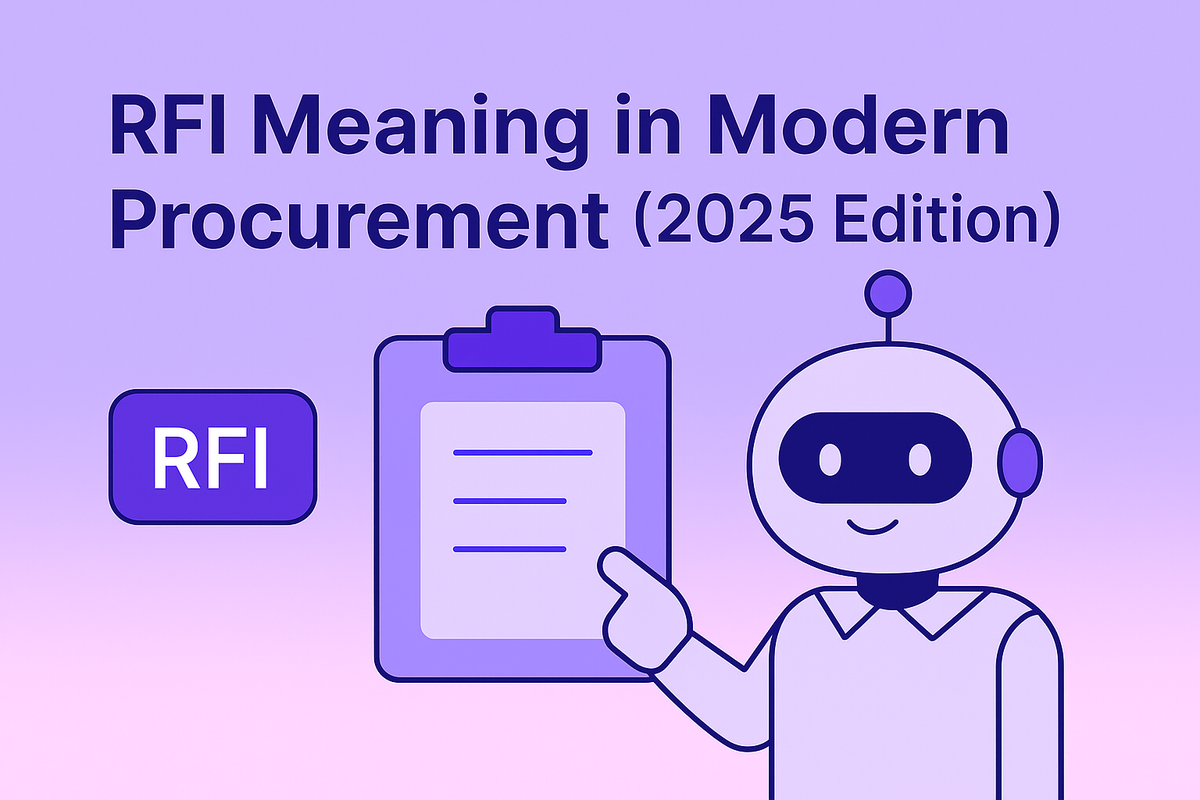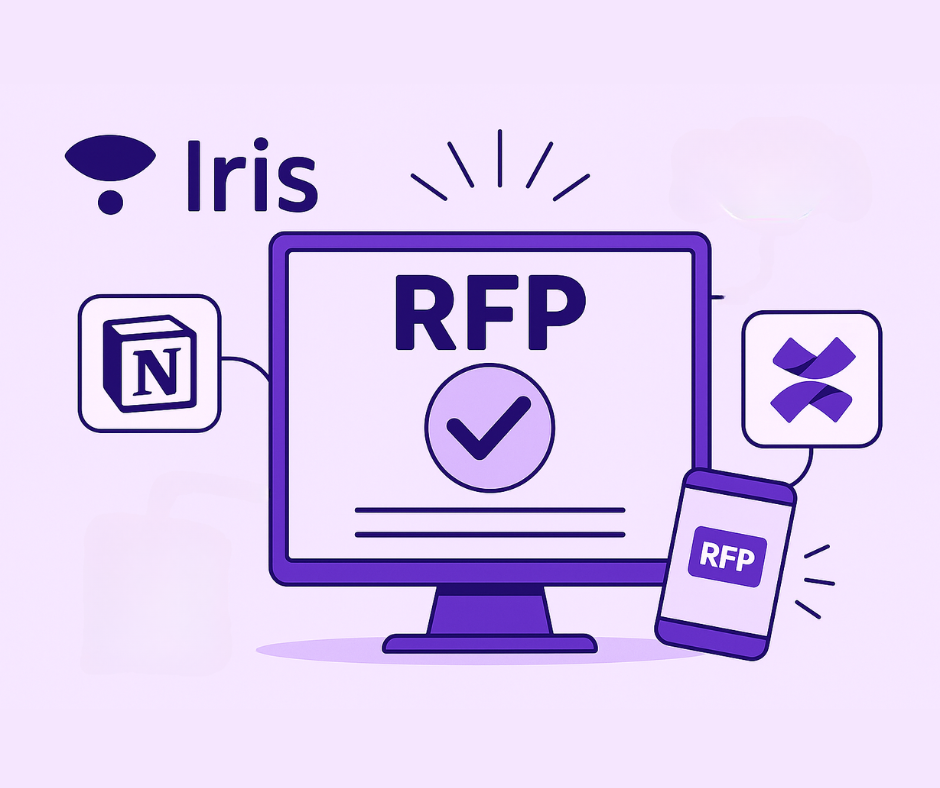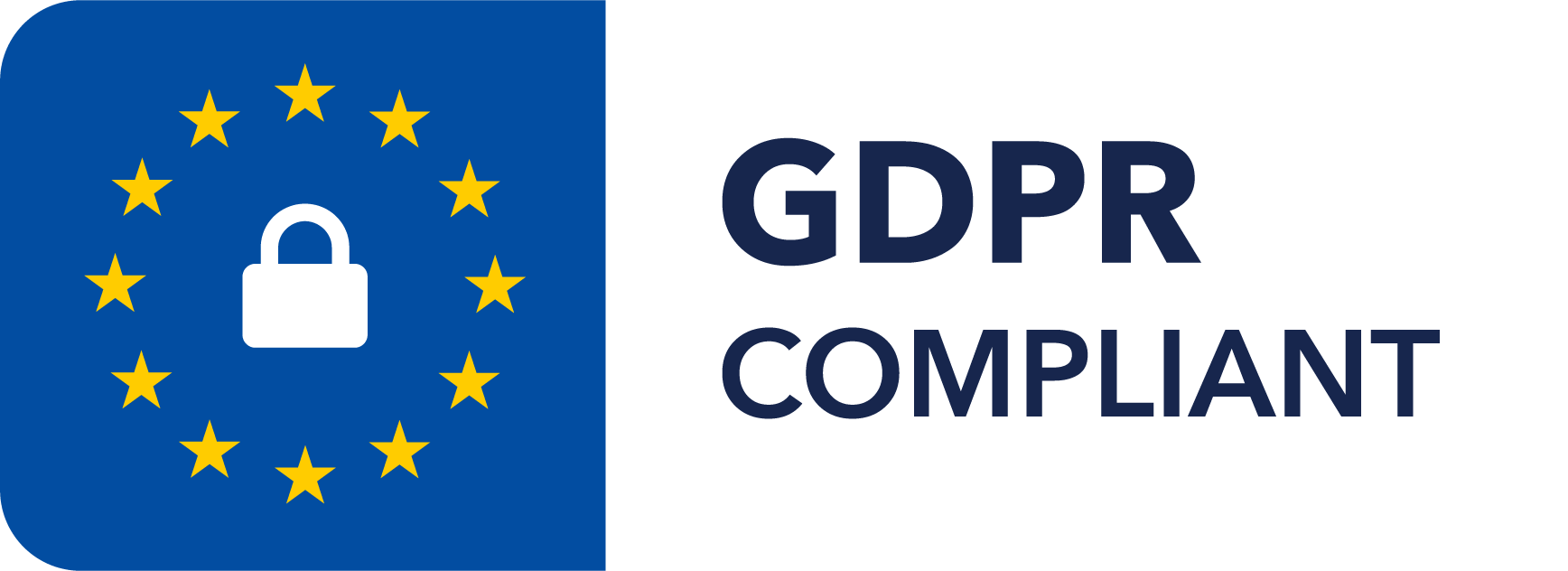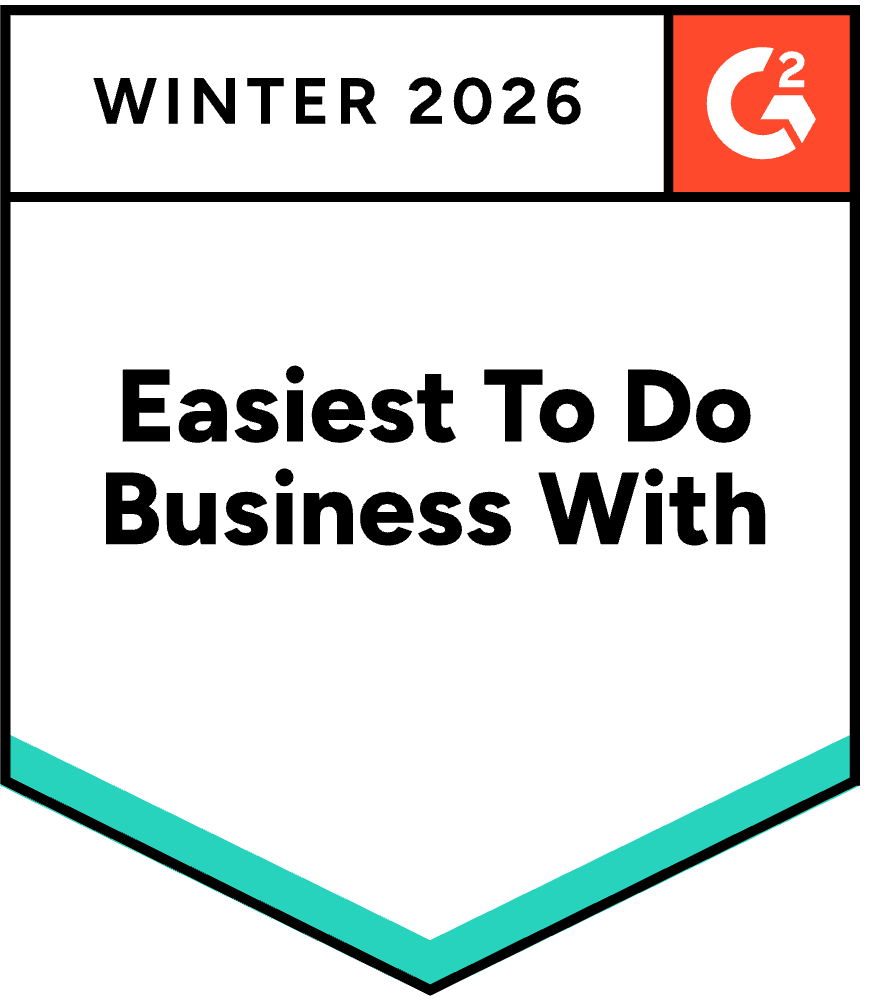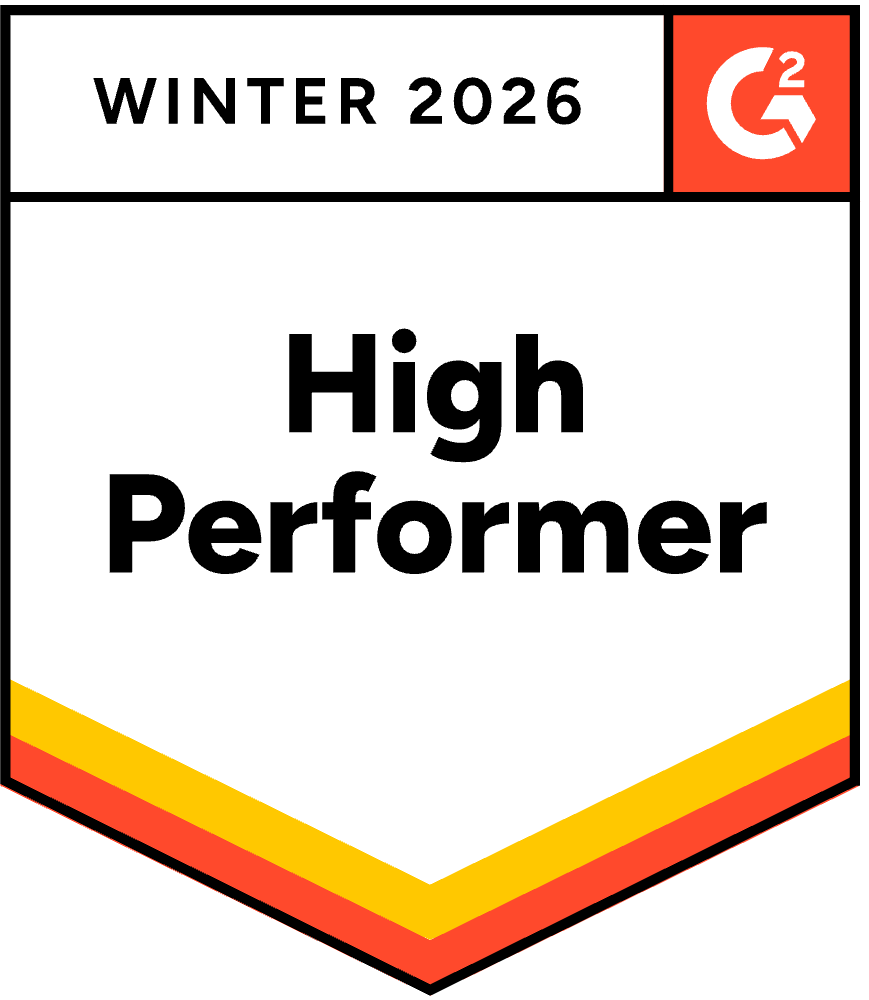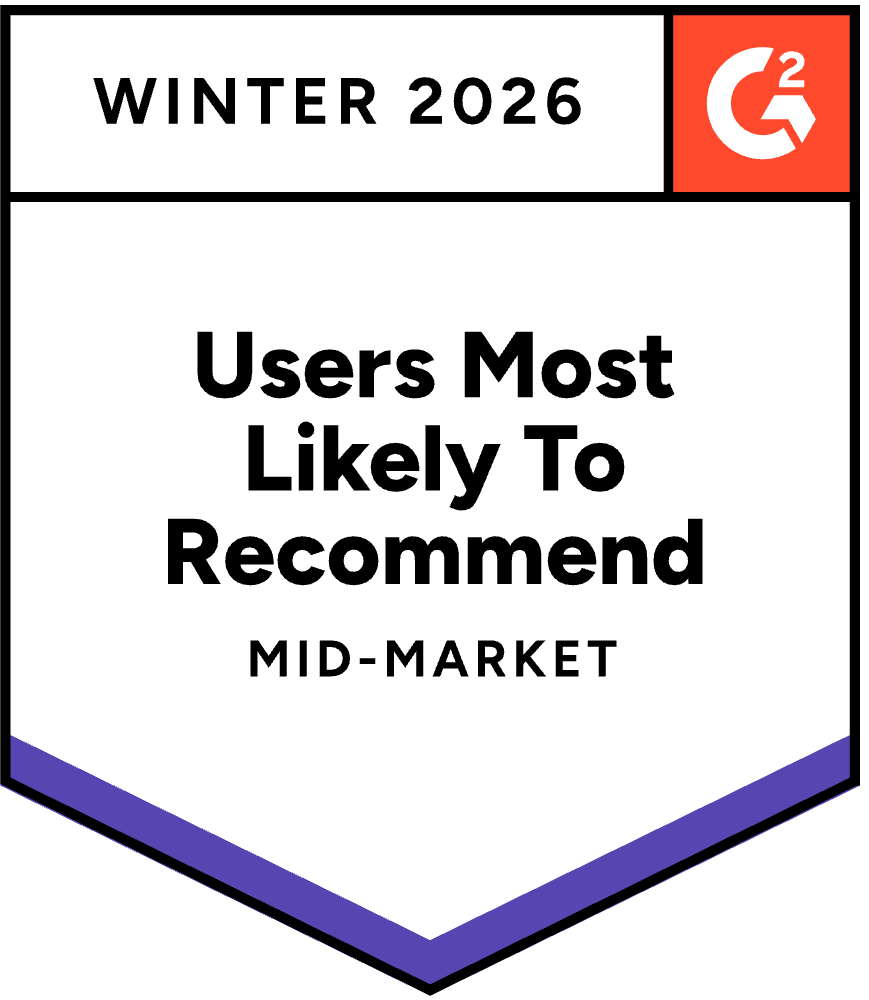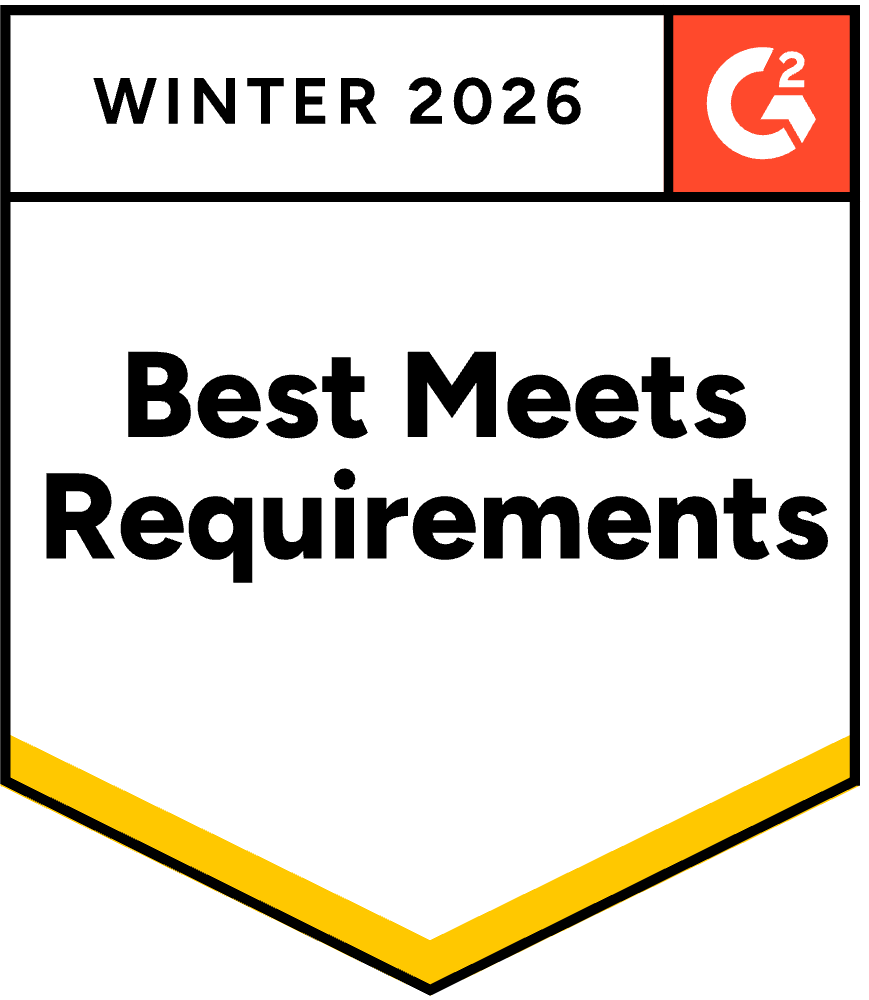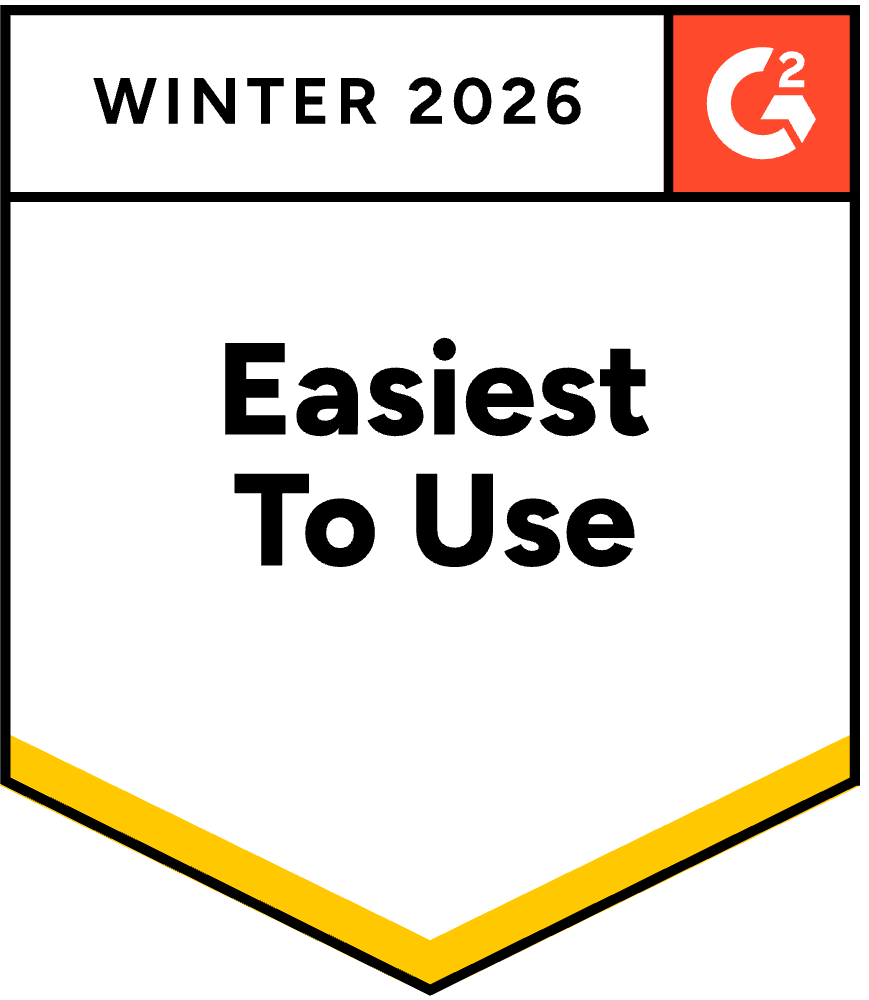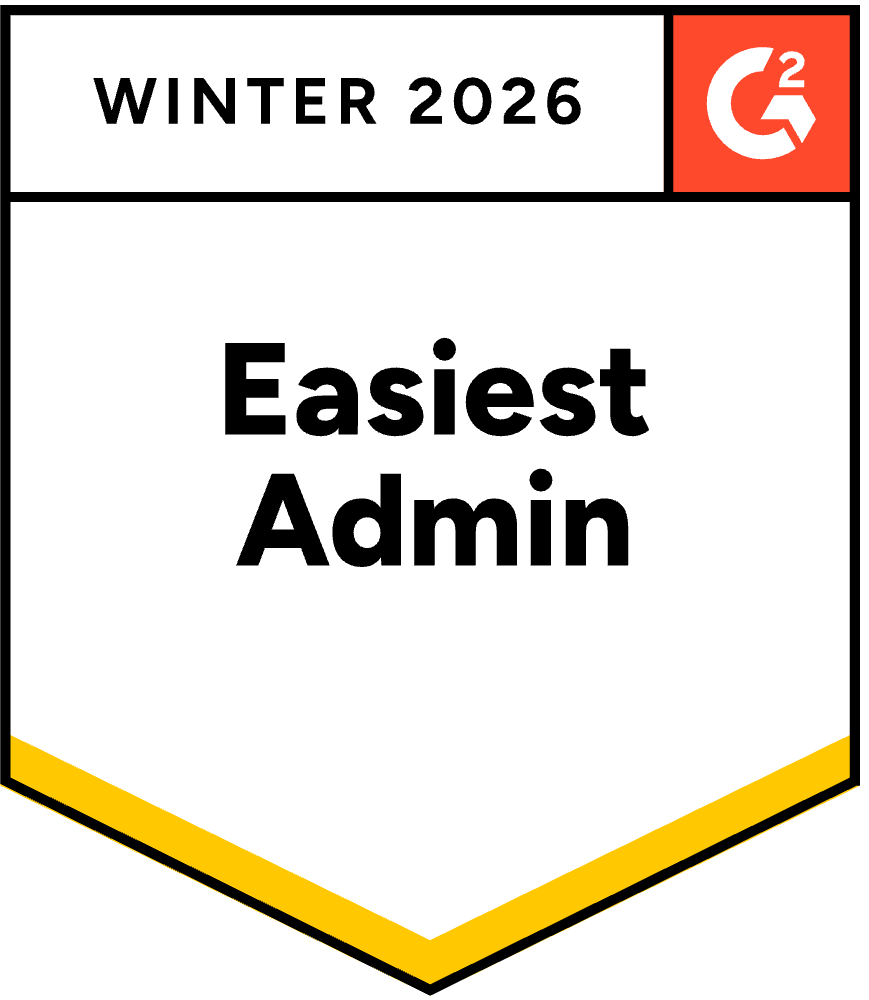How to Choose the Right AI RFP Software
July 3, 2025
By
Evie Secilmis
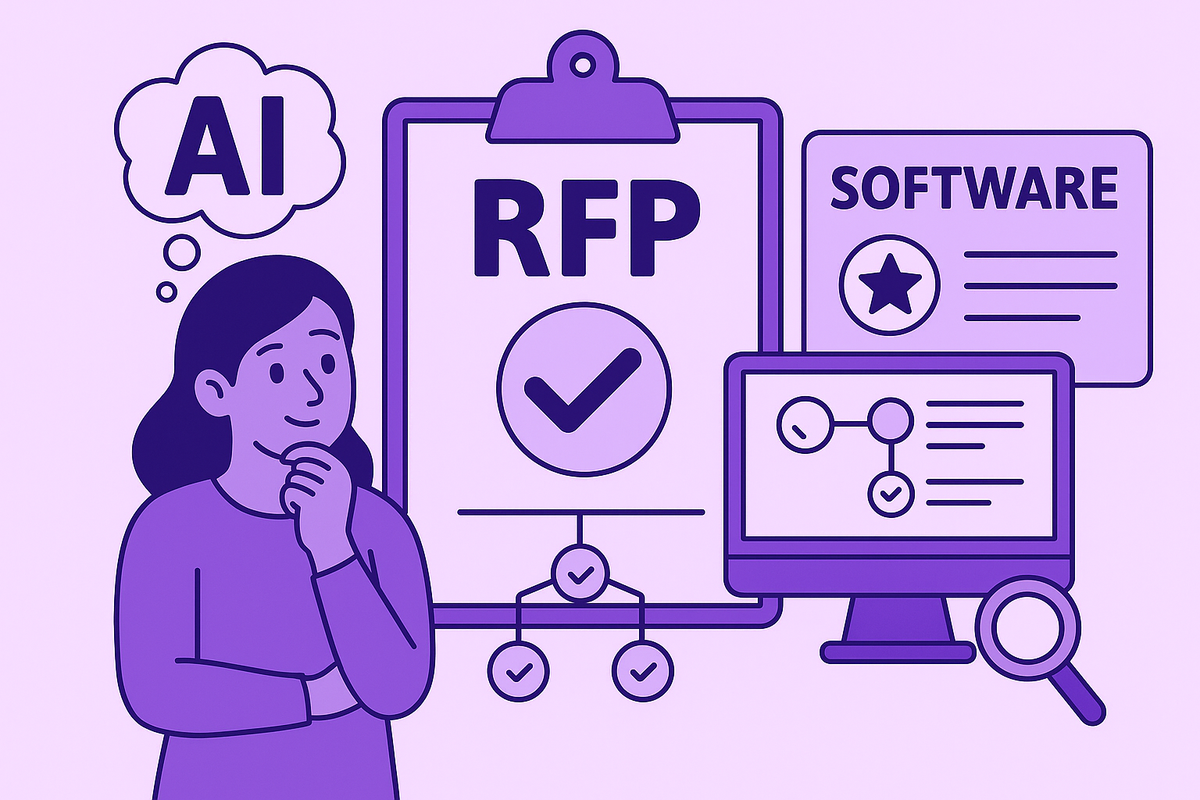
Choosing the Right RFP AI Software
Finding the right AI RFP software can feel like a full-time job. You know it can save you time and help you win more bids, but the market is crowded with options. How do you know which features actually matter? This guide cuts through the noise. We'll break down exactly what to look for, making your rfp software comparison simple and effective. Whether you're a startup founder or a marketing manager, you'll learn how to select the top rfp ai software that fits your team's needs and helps you submit winning proposals, every time.
What is AI RFP Software?
Before diving into the specifics, it's essential to understand what RFP AI software is and how it can benefit your organization. At its core, RFP AI software uses artificial intelligence to automate and improve the RFP process. It helps businesses create, manage, and respond to RFPs with greater efficiency and accuracy.
How Generative AI Works in RFP Software
Think of generative AI as your new, incredibly efficient teammate. Instead of just searching a database for keywords, this technology reads and understands the questions in an RFP, RFI, or security questionnaire. It then taps into your company’s approved content—like previous proposals, product documentation, and marketing materials—to generate a brand-new, contextually accurate answer. This process dramatically cuts down the time it takes to produce a first draft. What used to take your team days or even weeks of manual work can now be accomplished in just a few minutes, allowing you to respond to more bids with higher quality answers.
Modern AI vs. Traditional Q&A Banks
For years, sales teams have relied on traditional question-and-answer banks, which are essentially static libraries of pre-approved responses. The problem? These libraries quickly become outdated, leading to inconsistent and sometimes inaccurate proposals. It’s a manual chore to keep everything current. Modern AI platforms, on the other hand, offer a dynamic solution. Instead of just storing old answers, an AI deal desk like Iris connects to your live sources of information. It learns from every interaction and can even proactively identify outdated content across your systems, ensuring every response is built on the most current, accurate information available.
Why Your Team Needs AI RFP Software
- Time Savings: AI can automate repetitive tasks, reducing the time spent on manual data entry and document management.
- Improved Accuracy: AI algorithms can analyze data and provide insights, ensuring more accurate and consistent responses.
- Cost Efficiency: By streamlining the RFP process, businesses can reduce overhead costs associated with proposal management.
- Competitive Edge: With AI-driven insights, you can craft more compelling proposals, increasing your chances of winning bids.
The High Cost of Manual RFP Processes
If you’ve ever been part of a manual RFP response, you know the drill: late nights, endless email chains, and a frantic search for the right information. But the cost isn't just measured in stress and lost sleep. On average, companies lose around $720,000 each year because of these inefficient processes. Think about the sheer manpower involved. Creating a single first draft can take about 32 hours, spread across nine people over 10 days. That’s a massive drain on your most valuable resources—your team's time and expertise, which could be spent on more strategic, revenue-generating activities.
After all that work, the payoff is often disappointing. The average win rate for RFPs is a slim 8%, and a staggering 20% of proposals that are started are never even finished. This creates a frustrating cycle of high effort and low return that can leave even the most dedicated teams feeling burnt out and defeated. When you invest so much into a proposal, you want to feel confident it has a real shot at winning. The traditional, manual approach often makes that feel like an uphill battle, highlighting the need for a more effective way to manage responses.
Key Performance Metrics to Look For
When you start evaluating AI RFP software, it’s important to look past the flashy features and focus on tangible results. The first metric to consider is speed. How much faster can your team work? The right platform can help proposal managers deliver responses up to 80% faster. One company even reported saving 21,100 hours in a single year. That’s time your team gets back to focus on building client relationships and fine-tuning your sales strategy instead of getting bogged down in administrative tasks. This efficiency is one of the core benefits of adopting an AI-powered solution.
Faster responses are great, but they also need to be winning responses. A critical performance metric is the software's direct impact on your win rate. Look for solutions that have helped businesses achieve a 50% or more increase in how often they win bids. This is where you’ll see the real return on investment, as your proposal process transforms from a cost center into a powerful revenue driver. Also, consider the quality and consistency of your proposals. The best AI tools help you craft compelling, accurate, and on-brand responses every time, which builds trust and strengthens your reputation.
What Features Should Your RFP Software Have?
When comparing RFP AI software, keep an eye out for these essential features:
1. An Interface Your Whole Team Can Use
A simple and intuitive interface is crucial. The software should be easy to navigate, even for team members who are not tech-savvy. Look for a solution that offers a clean dashboard with clear instructions and accessible support.
2. Options to Customize Your Workflow
Every business has unique needs. Choose RFP AI software that allows you to customize templates, workflows, and reporting to fit your specific requirements. This flexibility can make a significant difference in how effectively the software meets your needs.
3. Integrations with the Tools You Already Use
Your RFP software should integrate seamlessly with your existing tools and systems, such as CRM platforms, project management tools, and document storage solutions. Integration ensures a smooth flow of information and enhances productivity.
4. Features That Make Teamwork Easier
RFPs often involve multiple stakeholders. Look for software that facilitates collaboration by allowing team members to work together in real-time, leave comments, and track changes. This feature ensures everyone stays on the same page.
5. A Centralized and Intelligent Knowledge Hub
Think of the best RFP software as more than just a response tool; it's your team's single source of truth. Instead of digging through old emails, shared drives, and chat messages to find that one perfect answer from a previous proposal, a centralized knowledge hub keeps everything in one place. This repository becomes the brain behind the operation, housing all your company's critical information—from product specifications and security protocols to case studies and team bios. When your AI has a clean, organized, and comprehensive library to pull from, it can generate accurate and relevant first drafts in a fraction of the time it would take a human to even find the right documents.
Unified Knowledge Management
A unified knowledge hub brings all your scattered content into a single, searchable system. This is where the AI truly shines, as it can instantly parse thousands of data points to find the most relevant information for any given question. Top-tier platforms use this unified system to help your team respond to not just RFPs, but also Security Questionnaires, RFIs, and DDQs with incredible speed and precision. The goal is to transform your company's collective knowledge from a disorganized liability into a powerful, strategic asset that helps you build better proposals, faster. This organized approach ensures every response is consistent and reflects the best, most up-to-date information your company has to offer.
Proactive Content Maintenance
A knowledge base is only as good as the information within it. Outdated content can be a silent deal-killer, leading to proposals with incorrect pricing, old feature descriptions, or conflicting information. This is why proactive content maintenance is a non-negotiable feature. The software should actively help you keep your content fresh by flagging information that might be old, redundant, or contradictory. For instance, a platform like Iris is designed to proactively identify outdated information across all your connected systems. This ensures that your response library is always current, so your team can generate proposals with confidence, knowing the information is accurate and ready to submit.
6. Advanced Content Generation and Refinement
The most powerful RFP AI software goes beyond simply finding and inserting pre-written answers. It actively helps you craft and refine your responses to perfectly match the opportunity in front of you. This means the AI acts as a writing assistant, not just a librarian. It can help you adjust the tone of your proposal, ensure consistency across hundreds of pages, and even handle complex tasks like language translation. These advanced capabilities are what separate a basic automation tool from a true strategic partner, enabling your team to produce higher-quality proposals that are tailored to each specific client and their unique requirements.
Multi-Language and Tonal Adjustments
In a global market, you may need to submit proposals in different languages or adapt your tone for different industries. Manually translating a 100-page RFP or rewriting it to sound more formal is a time-consuming and expensive process. Look for software that has built-in capabilities to handle these adjustments automatically. The ability to translate responses into multiple languages or shift the tone from technical to conversational with a single click is a massive advantage. This feature allows your team to pursue a wider range of opportunities without needing to hire external translators or spend days reworking content, making your proposal process far more agile and efficient.
Automated Consistency Checks
When multiple team members are contributing to a large proposal, inconsistencies are almost inevitable. One person might use an acronym while another spells it out, or different sections might contain slightly conflicting details about a product feature. These small errors can make a proposal look unprofessional. An automated consistency check feature acts as your final proofreader, scanning the entire document to find and flag conflicting answers or terms. This ensures the final proposal is coherent, polished, and professional from start to finish, reinforcing your company's credibility and attention to detail without adding hours of manual review to your team's plate.
7. Trustworthy AI and Data Security
Handing over your company's most sensitive information to an AI platform requires a huge amount of trust. Before you commit to any software, you need to be absolutely certain that your data will be protected and that the AI's outputs will be reliable. This means looking beyond the flashy features and digging into the provider's security protocols and their philosophy on AI training. The right partner will be transparent about how they handle your data and will have safeguards in place to ensure the AI generates factual, accurate responses based solely on the information you provide, protecting both your data and your reputation.
Guarantees Against AI "Hallucinations"
An "AI hallucination"—when an AI model confidently states something that is completely false—can be disastrous in an RFP response. Submitting a proposal with fabricated information could instantly disqualify you from a deal. To prevent this, the best RFP software operates within a closed-loop system. For example, Iris is designed to only learn from your company's verified information and does not use your data to train its general AI model. This ensures that every answer it generates is grounded in your established source of truth. Each company's instance is unique, so you can be confident the AI won't pull answers from the internet or another customer's data.
Commitments to Data Privacy
Your proposals, security documents, and internal data are confidential assets. It's critical to choose a software provider that makes data privacy a top priority. Look for platforms that offer robust security measures, such as strong data encryption both in transit and at rest. You should also verify that the provider complies with major privacy regulations like GDPR and holds certifications like SOC 2. A vendor's commitment to data security is a direct reflection of how much they value your trust. Don't hesitate to ask for their security documentation; a trustworthy provider will have it readily available and will be transparent about their practices.
Key Trends in RFP Software
The world of RFP software is moving beyond simple automation. While saving time is still a huge benefit, the most forward-thinking platforms now focus on making your entire response process smarter. It’s not just about answering questions faster; it’s about answering them better and learning from every single submission. This shift is helping teams gain a true strategic advantage, turning the RFP process from a necessary chore into a powerful engine for growth. Two of the biggest trends driving this evolution are the use of deep analytics for ongoing improvement and the ability to create a personalized user experience through customizable dashboards.
Data and Analytics for Continuous Improvement
Relying on guesswork just doesn't cut it anymore. Modern RFP software provides powerful data on how your proposals are performing, so you can make informed decisions and refine your strategy over time. You can finally get answers to questions like: Which responses are most frequently used? How long does it take your team to complete specific sections? Which pieces of content are associated with your highest win rates? Having access to this information allows you to spot patterns, identify your strongest content, and pinpoint areas for improvement. This data-driven feedback loop is essential for any team serious about increasing its success and helps you improve with every bid you submit.
Customizable Dashboards and Reporting
With more data comes the need to organize it in a way that makes sense for your team. A sales leader, a proposal manager, and a subject matter expert all care about different metrics. That’s why customizable dashboards are becoming a standard feature in top-tier RFP software. The ability to tailor your view ensures that you and your team are only seeing the information that matters most to your specific roles and goals. You can change your dashboard to see the data that's most relevant to you, which helps everyone stay focused and efficient. This level of personalization transforms the software from a one-size-fits-all tool into a command center built specifically to support your team’s unique workflow.
How to Choose the Best AI RFP Software
Now that you know what features to look for, it's time to evaluate your options. Here's how you can perform an effective RFP software comparison:
Step 1: Define Your Team's Needs
Start by listing your organization's specific needs. Consider factors such as the volume of RFPs you handle, the complexity of your proposals, and your budget constraints. Having a clear understanding of your requirements will help you narrow down your choices.
Key Questions to Ask Your Team
With a clear picture of your high-level needs, it's time to bring your team into the conversation. The best software in the world won't help if your team doesn't embrace it, so getting their input is non-negotiable. Gather your proposal managers, sales leads, and subject matter experts to discuss the daily realities of your RFP process. Use these questions as a starting point to guide your conversation and uncover what truly matters for your team's success:
- Where does our current process slow us down the most? Pinpointing the exact bottlenecks will help you find a tool that solves a real problem.
- How do we work together on proposals today? Think about communication, version control, and approvals. What would an ideal collaborative workflow look like?
- What other software does this new tool need to connect with? List your must-have integrations, like your CRM, project management tools, or cloud storage.
- How do we manage our content library? Is it easy to find the right answers, and more importantly, can we trust that the information is always current and accurate? A strong knowledge base is the foundation of efficient responses.
- What kind of user experience will encourage adoption? Are we looking for a plug-and-play solution that feels intuitive, or is the team prepared for more in-depth training for a powerful system?
Step 2: Research and Shortlist Your Top Options
Conduct thorough research to identify RFP AI software providers. Read reviews, check ratings, and gather recommendations from industry peers. Create a shortlist of potential solutions that align with your requirements.
Step 3: Schedule Demos and Start Free Trials
Once you have a shortlist, reach out to the software providers and request demos or trials. Hands-on experience with the software will give you a better sense of its usability and functionality. Pay attention to how well it meets your specific needs during the trial period.
Step 4: Create a Weighted Scorecard
After the demos, it’s easy for features to blur together. A weighted scorecard is your best tool for cutting through the noise and making an objective decision. Start by listing the features that matter most to your team, and then assign a weight to each one based on its importance. For example, if seamless integration with your current CRM is a non-negotiable, you might give it a higher weight than other features. Key areas to evaluate include the user interface—because a tool no one wants to use is useless—and customization options that let you tailor workflows to your specific process. Also, consider how well the software supports teamwork, since RFPs are rarely a solo project. Finally, look closely at the quality of the AI-generated content. A great platform like Iris not only generates first drafts quickly but also ensures the information is accurate and consistent, which is crucial for building winning proposals. By scoring each potential solution against your unique priorities, you can confidently identify the software that is truly the best fit for your team.
Step 4: Compare Pricing and Overall Value
Cost is an important factor in your decision-making process. Compare the pricing models of different RFP AI software options. Some providers offer subscription-based pricing, while others may charge per user or per proposal. Ensure you understand the total cost of ownership.
Understanding Common Pricing Models
As you compare different RFP software, you'll find that pricing structures can vary quite a bit. It’s about more than just the sticker price; it's about the value and features packed into each plan. Getting familiar with the common pricing tiers will help you match your team's needs with your budget, ensuring you don't overpay for features you won't use or choose a plan that you'll quickly outgrow. Most providers structure their pricing based on the number of users and the level of functionality, so let's break down what you can typically expect to find.
You'll generally find pricing broken down into a few standard tiers:
- Free or Basic Plans: These are great for getting a feel for the software. They usually come with core features but have limitations on things like storage, the number of documents you can work on, or access to advanced AI capabilities. This is a solid starting point for very small teams or individuals just beginning to formalize their RFP process.
- Business or Pro Plans: Typically priced per user per month (often in the $25 to $50 range), these plans are built for growing teams. You can expect more robust features like a comprehensive content library, workflow automation, custom templates, and better analytics. This tier is often the sweet spot for teams that handle a steady volume of proposals and need tools to collaborate effectively.
- Enterprise Plans: Geared toward large organizations, these custom-priced plans (often starting around $50 to $100 per user) offer the whole package. This includes top-tier security protocols, full integration with your existing tech stack (like Salesforce and SharePoint), and dedicated customer support. If your business has complex security needs or requires a solution that can scale across multiple departments, this is the tier to explore.
When you evaluate these options, think about the return on investment. A lower-priced plan might seem appealing, but if a more advanced tool can dramatically reduce the time your team spends on proposals and help you win more deals, it often provides far greater value. The right platform should feel like an extension of your team, streamlining your entire deal desk from RFPs and SOWs to security questionnaires.
Step 5: Get Feedback from Your Team
Before making a final decision, seek feedback from team members who will be using the software. Their insights can provide valuable perspectives on usability and effectiveness. Additionally, consider reaching out to existing users of the software for their feedback and experiences.
Finding the Right AI RFP Software for You
Choosing the right RFP AI software is a crucial decision that can impact your organization's efficiency and success in winning bids. By understanding the benefits, key features, and evaluation process, you can make an informed choice that aligns with your business goals. Remember to prioritize user-friendliness, customization, integration, and collaboration features when evaluating your options. With the right RFP AI software, you'll be well-equipped to streamline your proposal processes and gain a competitive edge in the market.
By following these steps and considering your unique needs, you'll be able to select RFP AI software that enhances your proposal management and helps your business thrive.
From sourcing to submission, Iris makes RFP management easier with AI.
Key Takeaways
- Your AI is only as smart as your content: A powerful AI needs a clean, centralized knowledge base to work its magic. Choose a platform that unifies your company's information and actively helps you maintain it, ensuring every AI-generated response is accurate and up-to-date.
- Demand more than just copy-and-paste automation: The best RFP software acts as a strategic writing partner. Look for advanced features that help you refine tone, check for consistency, and handle translations, allowing you to create higher-quality proposals that stand out.
- Make your decision with a scorecard, not just a gut feeling: Involve your team to define your must-have features, then use a weighted scorecard to evaluate vendors objectively. This ensures you choose a tool that solves your actual workflow challenges, not just one with a flashy demo.
Related Articles
Share this post
Link copied!




